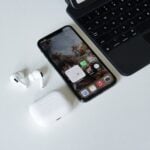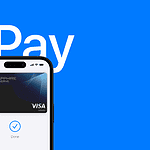There are a few options for getting government assistance when it comes to getting a phone, tablet, or broadband internet. Government programs like Lifeline can provide free or reduced pricing on iPhones or other cell phone models along with cell service to low-income individuals who qualify. Previously, there was also the Affordable Connectivity Program, but that program has now been closed by Congress. These programs are designed to help people stay connected even if they can’t afford a phone.
To qualify for a free iPhone and service, you need to have a low income or receive help from programs like Medicaid or SNAP. The free iPhones come with free monthly service that includes talk minutes, texts, and data. Different companies offer these phones, such as Cintex Wireless, AirTalk Wireless, and Access Wireless. It’s a good idea to check which options are available in your area and see if you qualify for these programs.

Lifeline: https://www.lifelinesupport.org/
T-Mobile Affordability Programs: https://www.t-mobile.com/news/community/the-affordable-connectivity-program-is-ending-t-mobile-has-options-to-keep-you-connected
Verizon Affordability Programs: https://www.verizon.com/about/news/verizon-affordable-reliable-connectivity-options
AT&T Affordability Programs: https://www.att.com/affordable-connectivity-program/
Government Assistance for Affordable Phones: Your Options
Qualifying for a free government iPhone depends on income level and participation in specific programs. Two primary avenues exist:
Lifeline Assistance Program
- Focus: Making communication services affordable for low-income individuals.
- Benefits: Discounts on monthly phone bills, potentially a free phone (not always an iPhone).
- Eligibility: Income at or below 135% of the Federal Poverty Guidelines OR participation in programs like Medicaid, SNAP, SSI.
Eligibity Overview
Eligibility varies from state to state, but you may qualify for Lifeline if you’re currently on any of the following government programs.
- Medicaid
- Food Stamps/SNAP (Supplemental Nutrition Assistance Program)
- Supplemental Security Income (SSI)
- Federal Public Housing Assistance (Section 8)
- Veterans Pension and Survivors Benefit Programs
- Income Based Qualification Method
Affordable Connectivity Program (ACP) – Now ended
The ACP was previously a government program to assist lower income citizens with technology assistance, however, this program was not funded in the latest congress. The program previously allowed for:
- Focus: Broadband internet access, but often includes discounted or free smartphones.
- Benefits: Up to $30 off monthly internet bills, potential one-time discount on a connected device (like an iPhone).
- Eligibility: Income at or below 200% of the Federal Poverty Guidelines OR participation in programs like Medicaid, SNAP, WIC, etc.
How to Apply

- Check Eligibility: Use online tools like https://www.lifelinesupport.org/ or contact providers directly.
- Choose a Provider: Companies like Assurance Wireless, SafeLink Wireless participate in these programs.
- Gather Documents: Proof of income (pay stubs, tax returns), program participation proof, ID.
- Apply: Either through the provider’s website or by mailing in a paper application.
Additional Notes
- Not all providers offer iPhones.
- Availability varies by state.
- Programs are subject to change, so verify current details.
Key Takeaways
- Free government iPhones help low-income people stay connected
- You may qualify based on income or if you get certain types of aid
- Different companies offer free iPhones with varying features and plans
Eligibility and Enrollment for Free Government iPhones
Getting a free government iPhone involves meeting specific criteria and going through an application process. The Lifeline and Affordable Connectivity Program (ACP) help low-income people get phones and service.
Understanding the Lifeline Assistance Program
Lifeline is a federal program that gives discounts on phone and internet service to those who need it. It’s run by the FCC and aims to keep everyone connected. Lifeline offers a monthly discount of $9.25 on phone or internet bills.
To get Lifeline, you must either have a low income or be part of certain government aid programs. You can only get one Lifeline discount per household. This means just one phone or internet service can be discounted.
The program works with many phone companies. These companies offer free phones, like iPhones, to Lifeline customers.
Qualifying for Lifeline Through Government Benefit Programs
You can get Lifeline if you’re in certain government programs. These include:
- Medicaid
- SNAP (food stamps)
- SSI (Supplemental Security Income)
- Federal Public Housing Assistance
- Veterans Pension and Survivors Benefit
If you’re in any of these programs, you qualify for Lifeline. You’ll need to show proof when you apply. This could be a letter or card that shows you’re in the program.
Some states have their own programs that also qualify. Check with your state’s Lifeline office to see what counts.
Income-Based Eligibility Requirements
You can also get Lifeline based on your income. Your income must be at or below 135% of the Federal Poverty Guidelines. These guidelines change based on how many people are in your household.
For example, a single person might qualify if they make $18,347 or less per year. A family of four might qualify if they make $37,463 or less per year.
To prove your income, you’ll need to show documents. These could be:
- Last year’s tax return
- Pay stubs
- Social Security statement of benefits
Make sure your documents are recent. Most providers want proof from the last 12 months.
The Application and Verification Process
To apply for a free government iPhone, start by checking if you qualify. You can use the National Verifier tool online. This tool checks if you’re eligible for Lifeline and ACP.
Next, pick a phone company that offers free iPhones. Not all Lifeline providers give out iPhones. Look for ones that do.
Fill out the application form. You’ll need to give personal info like your name, address, and Social Security number. You’ll also need to prove your eligibility.
After you apply, the company will check your info. This might take a few days. If approved, they’ll tell you how to get your free iPhone.
Remember, you have to recertify every year. This means showing you still qualify for the program. If you don’t, you might lose your free service.
Features and Providers of Free iPhone Services
Free iPhone services offer many benefits to those who qualify. These programs help people stay connected with family, work, and important services.
Benefits Offered by the Lifeline and ACP Programs
The Lifeline Assistance program gives eligible users free or low-cost phone service. This includes talk time, texts, and data each month. The Affordable Connectivity Program (ACP) adds extra perks. It offers bigger data plans and sometimes even free smartphones.
Users can get up to 10GB of high-speed data per month. Many plans have unlimited talk and text too. Some providers give free iPhones to ACP members. This helps more people access modern tech.
Both programs aim to keep low-income folks connected. They make it easier to find jobs, get healthcare, and stay in touch with loved ones.
Selecting a Service Provider and Plan
Several companies offer free iPhone services through these programs. Some top choices are:
- SafeLink Wireless
- Assurance Wireless
- Q Link Wireless
- TruConnect
Each provider has different plans. Some give more data while others focus on talk time. It’s smart to compare a few before picking one.
Look at coverage in your area too. A provider with good service where you live is key. Check if they offer extras like free Wi-Fi hotspots or rollover data.
Customer Support and Service Quality
Good customer service is vital for free phone programs. Most providers offer phone and online support. They can help with setup, tech issues, and plan changes.
Service quality can vary by company and location. Some users report dropped calls or slow data at times. But many find the service works well for basic needs.
It’s worth reading reviews from other users in your area. This can give you an idea of what to expect. Remember, free services may not be as fast as paid plans. But they still help many people stay connected who couldn’t otherwise afford it.







